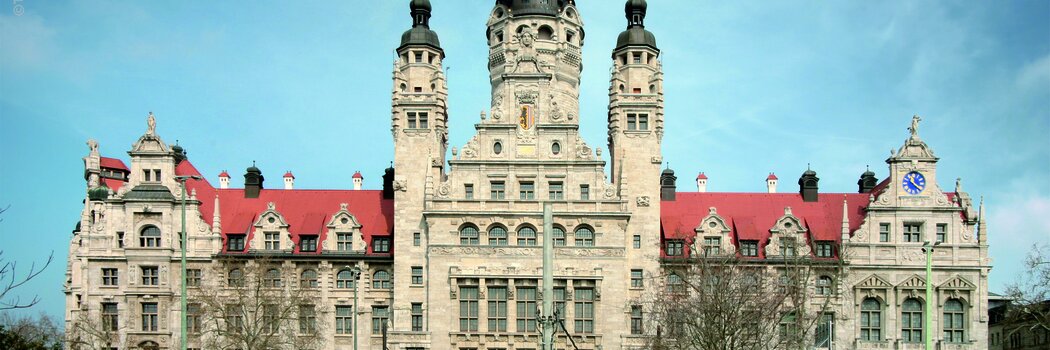Future-oriented concept in the historical building
Optical fibers instead of countless copper cables, no sub-distributors on the individual floors – old buildings require minimalistic network cabling. Nevertheless, no one needs to miss out on high bandwidths. This is demonstrated by the IT concept of the New City Hall in Leipzig and at the same time it convinces with its durability and flexibility. Renovation of the historic building began back in the last millennium. In 1999, the IT service provider for the City of Leipzig, Lecos GmbH, was faced with the challenge of establishing a high-performance network in the historic building complex. Only a patchy coax cabling from the 1990s was present, which was not to be expanded in the long term: The 90-meter length limitation, the required distribution rooms, and the contorted architecture spoke against the use of copper just as much as its tremendous space requirement. Lecos and the City of Leipzig made a future-oriented decision: The entire building was to be successively equipped with optical fibers, but the connections to the terminal devices had to be configured cost-effectively with Ethernet interfaces.
Sustainable realisation on a limited budget
MICROSENS, an expert in the field of fiber optic technology, developed the Fiber To The Office concept in the mid-1990s: Today, compact office switches in the cable duct connect the fiber-optic network with the end devices. Decisive factors in winning the contract were both the attractive conditions as well as the experience and competence of the German manufacturer. From today's perspective, the special feature of this project is not only that the technology is still up-to-date. In fact, the technology allows its stepwise realisation according to the current budgetary situation. To be precise, Lecos is working on three projects simultaneously:
- Comprehensive renovation of the building complex and the associated fiber optic cabling as well as initial installation of Micro Switches
- Replacement of the installed Micro Switches with PoE-capable switches
- Operation of the old infrastructure.
The fiber optic cabling and the installation of the FTTO switches started on the 5th floor of the building. Meanwhile, 500 employees work via FTTO on the 3rd, 4th, and 5th floors. The first generation switches have already been replaced on the 4th and 5th floors by new PoE-capable switches with gigabit uplink ports. The components still have to be replaced on the third floor, and in the three floors below, an optical fiber infrastructure has to be established and Micro Switches installed. Until then, the existing copper cabling will be used here.
Modern technology for immediate use
The City of Leipzig pays great attention to the sustainable use of resources and on account of the limited budget, the network implementation extends to a longer period. Thanks to flexible MICROSENS technology, the City Council already profits today from having WiFi throughout the New City Hall. Lecos installed PoE-capable switches at all relevant points to operate the WiFi access points from and to ensure continuous coverage. The service provider used the installed Micro Switches in the upper floors. On the lower floors, it was decided to replace the existing distribution units. Here, 25-port Profi Line switches from MICROSENS are in use now. The industry-compatible Gigabit Ethernet switches offer PoE, have an expanded temperature range, and need no active fans. This is where André Rumpelt, network manager at Lecos for the City of Leipzig, sees an enormous advantage: "As we don't have any separate distribution rooms available, the distribution switches are located in the offices. We didn’t want to impose permanent fan noise on the employees."
End-to-end compatibility ensures smooth operation
All applications used in the City Hall run over the network. The availability of the IT infrastructure is essential for the total of 1000 employees. André Rumpelt is relaxed about it: "We have over 300 Micro switches and 30 Profi Line Racks switches in use. The MICROSENS components work absolutely reliably, we are very satisfied. And the configuration is easy: We use the extremely convenient PC-based management software". Overall, Lecos and the Leipzig City Council also profit from the end-to-end compatibility of the MICROSENS switches. And should questions arise, the IT Team appreciates the qualified support from the German manufacturer. An important criterion for Lecos as a full-service provider. After all, André Rumpelt's team doesn’t only install the switches, but operates the entire network. In order to optimise this further, the IT manager plans to administrate all switches via the server-based MICROSENS network management system in the future. Things are generally set to remain exciting in the years to come: As soon as all offices are equipped with up-to-date FTTO technology including PoE, the conversion of the telephone system to IP will begin.












